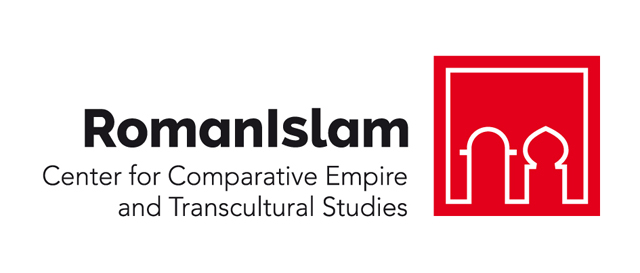Sacred Spaces: Churches and Mosques within the society
"Blocked Passageways: An Exploration of Somatic Time in 'Converted' Buildings" by Ann Marie Yasin
Our primary model for analyzing various forms of ancient architectural reuse—from "converted" buildings to spolia—opposes pragmatic repurposing against ideological messaging. By contrast, this paper focuses on how "old" buildings that have been reanimated through reuse shape social and somatic experiences of temporality. Juxtaposing observations of modern adaptations of ruins against evidence from late antique case study sites in Roman Syria-Palestine, I consider the impact of material and spatial interventions such as transformed walls and blocked doorways. I argue that such evidence sheds light on a history of embodied and kinetic experience at long-lived sites that cannot be seen by concentrating on ideological and economic factors alone.
 Prof. Ann Marie Yasin holds a joint appointment in the departments of Art History and Classics and is Chair of the Classics Department at the University of Southern California in Los Angeles. Her current book project, Rebuilding Histories: Architectural Temporality from Augustus to Justinian, investigates correlations between architectural restoration and notions of continuity and change, monumentality and ephemerality. For this project she has been named a Fellow of the American Council of Learned Societies (ACLS), and previous awards include fellowships at the American Academy in Rome and at Dumbarton Oaks in Washington, D.C.
Prof. Ann Marie Yasin holds a joint appointment in the departments of Art History and Classics and is Chair of the Classics Department at the University of Southern California in Los Angeles. Her current book project, Rebuilding Histories: Architectural Temporality from Augustus to Justinian, investigates correlations between architectural restoration and notions of continuity and change, monumentality and ephemerality. For this project she has been named a Fellow of the American Council of Learned Societies (ACLS), and previous awards include fellowships at the American Academy in Rome and at Dumbarton Oaks in Washington, D.C.
"The Past as Presence: Christians, Muslims, and the Generation of Sacred Topography in Medieval Syria" by Stephennie Mulder
Medieval Muslims experienced sacred history through the land. Put differently, for medieval Muslims, sacred history was emplaced: it was situated in space by means of ritual actions and behaviors that had material consequences. Indeed, despite the prodigious textual output of the era, for the majority of ordinary Muslims, the crucial point of interaction with Islamic history was not literary, but physical: through contact with holy places, by means of ziyāra, or visitation of holy sites. Beginning in the twelfth century, Islamic history, and thus a distinctly Islamic sense of self, was reified through the production of a new, conspicuously Islamic topography – a great, interconnected network of individual shrines that functioned as focal points of holy power. These shrines appear to have been built in response to a recently revealed, massive building campaign in the Latin Kingdom of Jerusalem. Using the framework of the numerous shrines for al-Husayn that were created in this period, and employing art historical, archaeological, and anthropological methods, this paper argues for the generation of a distinctive Muslim sacred topography in medieval Syria that was focused on the ʿAlid shrines. These sites represent a little-studied point of transmission and exchange between Christians and Muslims in the Eastern Mediterranean.
 Prof. Stephennie Mulder is Associate Professor of Islamic Art and Architecture at the University of Texas at Austin and is President of the Middle East Medievalists Organization. She is a specialist in Islamic art, architectural history, and archaeology. She worked for over ten years as the head ceramicist at Balis, a medieval Islamic city in Syria, and has also conducted archaeological and art historical fieldwork in Syria, Israel Egypt, Turkey, and elsewhere in the region. Mulder’s book The Shrines of the ‘Alids in Medieval Syria: Sunnis, Shi’s and the Architecture of Coexistence (2014) received numerous awards. She has also published on matters related to heritage preservation and the trade in looted antiquities. She has appeared in media interviews and written editorials for media outlets such as the BBC, IB Times, al-Jazeera, the L.A. Times, Huffington Post, and U.S. News and World Report on cultural heritage issues, Islamic art, antiquities, and the history of sectarian relations in Islam.
Prof. Stephennie Mulder is Associate Professor of Islamic Art and Architecture at the University of Texas at Austin and is President of the Middle East Medievalists Organization. She is a specialist in Islamic art, architectural history, and archaeology. She worked for over ten years as the head ceramicist at Balis, a medieval Islamic city in Syria, and has also conducted archaeological and art historical fieldwork in Syria, Israel Egypt, Turkey, and elsewhere in the region. Mulder’s book The Shrines of the ‘Alids in Medieval Syria: Sunnis, Shi’s and the Architecture of Coexistence (2014) received numerous awards. She has also published on matters related to heritage preservation and the trade in looted antiquities. She has appeared in media interviews and written editorials for media outlets such as the BBC, IB Times, al-Jazeera, the L.A. Times, Huffington Post, and U.S. News and World Report on cultural heritage issues, Islamic art, antiquities, and the history of sectarian relations in Islam.


